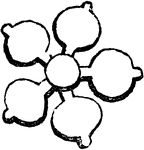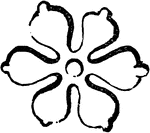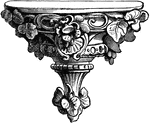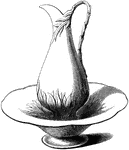Couch Grass
Couch Grass (Triticum repens) is also referred to as Quitch Grass, Twitch Grass, Dog Grass, and Chandler…

Couch Grass
Couch Grass (Triticum repens) is also referred to as Quitch Grass, Twitch Grass, Dog Grass, and Chandler…

Water Hair Grass
Water Hair Grass (Aira aquatica) is the sweetest of the British grasses. Its stems and leaves when green…
Wild Oat Grass
Wild Oat Grass (Danthonia spicata), also referred to as White Top grass, and Old Fog grass, is common…

Wild Oat Grass
Wild Oat Grass (Danthonia spicata), also referred to as White Top grass, and Old Fog grass, is common…

Wild Oat Grass
Wild Oat Grass (Danthonia spicata), also referred to as White Top grass, and Old Fog grass, is common…
Downy Oat Grass
The Downy Oat Grass (Trisetum pubescens) is naturalized in chalky soils and on such soils its leaves…

Tall Meadow Oat Grass
Tall Meadow Oat Grass (Arrhenatherum avenaceum), or Tall Oat Grass is the avena elatior of Linnaeus.…
Tall Meadow Oat Grass
Tall Meadow Oat Grass (Arrhenatherum avenaceum), or Tall Oat Grass is the avena elatior of Linnaeus.…
Meadow Soft Grass
The Meadow Soft Grass (Holcus lanatus), also referred to as Velvet Grass, has its spikelets crowded…
Reed Canary Grass
The Reed Canary Grass (Phalaris arundinacea) has a panicle that is slightly branched, clustered, and…

Reed Canary Grass
The Reed Canary Grass (Phalaris arundinacea) has a panicle that is slightly branched, clustered, and…
Common Millet
The Common Millet (Panicum miliaceum) flowers in large, open, nodding panicles. The leaves are lance-shaped…

Hungarian Grass
Hungarian Grass (Panicum Germanicum) is an annual forage plant. It germinates readily, withstands the…
Finger-spiked Wood Grass
Fiinger-spiked Wood Grass (Andropogon furcatus) grows about four feet high. The leaves are smooth, the…

Finger-spiked Wood Grass
Fiinger-spiked Wood Grass (Andropogon furcatus) grows about four feet high. The leaves are smooth, the…

Finger-spiked Wood Grass
Fiinger-spiked Wood Grass (Andropogon furcatus) grows about four feet high. The leaves are smooth, the…

Finger-spiked Wood Grass
Fiinger-spiked Wood Grass (Andropogon furcatus) grows about four feet high. The leaves are smooth, the…

Indian Corn
Maize known as corn by most English-speakers, is a cereal grain domesticated in Mesoamerica and subsequently…
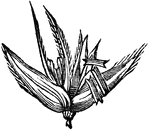
Indian Corn
Maize known as corn by most English-speakers, is a cereal grain domesticated in Mesoamerica and subsequently…
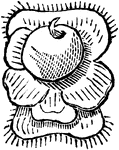
Indian Corn
Maize known as corn by most English-speakers, is a cereal grain domesticated in Mesoamerica and subsequently…

Indian Corn
Maize known as corn by most English-speakers, is a cereal grain domesticated in Mesoamerica and subsequently…

Red Clover
Red Clover (Trifolium pratense) is a species of clover. The Red Clover can readily be distinguished…
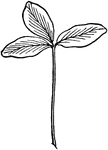
Red Clover
Red Clover (Trifolium pratense) is a species of clover. The Red Clover can readily be distinguished,…

Red Clover
Red Clover (Trifolium pratense) is a species of clover. The Red Clover can readily be distinguished…

White Clover
The White Clover ((Trifolium repens) stems are spreading, slender and creeping. The leaves are are inversely…

White Clover
The White Clover ((Trifolium repens) stems are spreading, slender and creeping. The leaves are are inversely…

Sainfoin
Sainfion (Hedysarum onobrychis), a hay, is a leguminous plant with many straggling, tapering, smooth,…
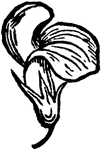
Sainfoin
Sainfion (Hedysarum onobrychis), a hay, is a leguminous plant with many straggling, tapering, smooth,…

Sainfoin
Sainfion (Hedysarum onobrychis), a hay, is a leguminous plant with many straggling, tapering, smooth,…
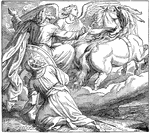
Elijah Taken up into Heaven
"And it came to pass, as they still went on, and talked, that, behold, there appeared a chariot of fire,…

Pecopteris Tree Fern
Pecopteris, frond of an ancient tree fern, was a form genus of leaves from several unrelated plant groups…
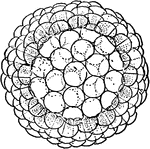
Sponge Develoment
The sponge, a many celled animal, begins its life as a single-cell, the egg. The continued division…

Sponge Develoment
The sponge, a many celled animal, that begins its life as a single-cell, the egg. The continued division…

Sponge Develoment
The sponge, a many celled animal, begins its life as a single-cell, the egg. After division of cells…
Sceptre with the Cross
"The royal Sceptre with the Cross is of gold; the handle is plain, and the upper part wreathed; it is…
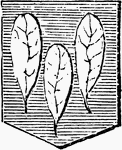
Leaves Slipped
"Azure, three laurel leaves slipped, argent. SLIPPED. Torn from the stock or branch." -Hall, 1862
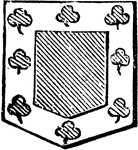
Verdoy
"Vert, a bordure argent, verdoy, of trefoils. VERDOY. A bordure charged with eight leaves." -Hall, 1862
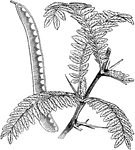
Honey Locust
"Branch and Pod of Honey-locust (Gleditschia triacanthos). GLEDITSCHIA. A genus of leguminous thorny…

Globe Flower
"Globe-flower (Trollius Europaeus). The Trollius Europaeus, a ranunculaceous plant of Great Britain…
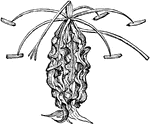
Gloriosa
"Flower of Gloriosa superba. GLORIOSA. A genus of tuberous-rooted liliaceaous plants, with opposite…

Letter A with Angels
This letter A with angels is designed with the angels playing a trumpet and a sea shell in the background.…
Margin Drawing
This margin drawing was created by German artist Albrecht Dürer in 1515. It is found in the prayer…

Margin Drawing
This margin drawing was created by German artist Albrecht Dürer in 1515. It is found in the prayer…

Margin Drawing
This margin drawing was created by German artist Albrecht Dürer in 1515. It is found in the prayer…

Wild Oat Grass
Wild Oat Grass (Danthonia spicata), also referred to as White Top grass, and Old Fog grass, is common…
Wild Oat Grass
Wild Oat Grass (Danthonia spicata), also referred to as White Top grass, and Old Fog grass, is common…
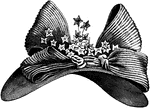
Lady's Large Hat
This lady's large hat is curved to the shape of the head with a ribbon and small plant leaves in the…

Late 19th Century Dress with Hat
This late 19th century dress with hat is worn as a lady's visiting outfit. The dress has a plaid pattern…
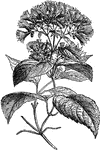
Guaco Branch
"Flowering branch of Guaco (Mikania guaco). GUACO. The Mikania Guaco, a climbing composite of tropical…
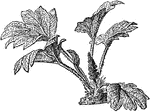
Chilean Rhubarb
The Chilean Rhubarb (Gunnera tinctoria) is a large-leaved plant in the Gunneraceae family. It was also…

Caddy Spoon
This caddy spoon has a handle that is designed in a sprig of weed that resemble a small water-lily.…

Wood Carving
This wood carving is sculptured in alto-relievo which is a high relief. The design shows field animals…
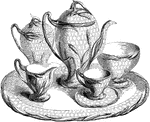
Coffee Service
This coffee service is covered with an open honey comb design. It has handles formed of wheat ears,…
